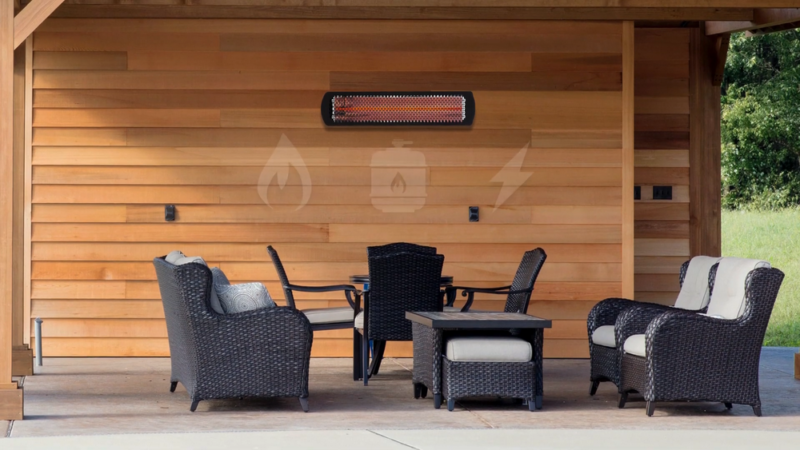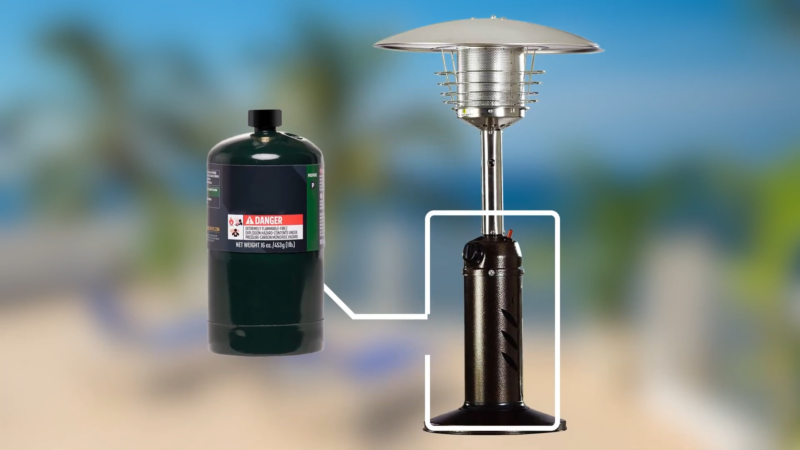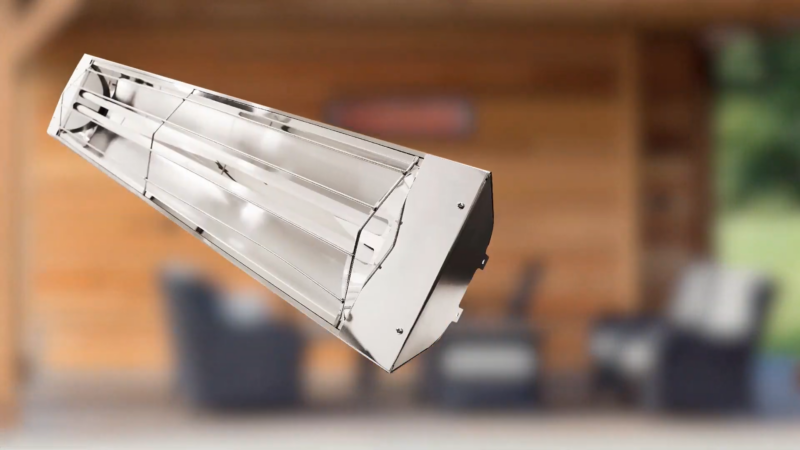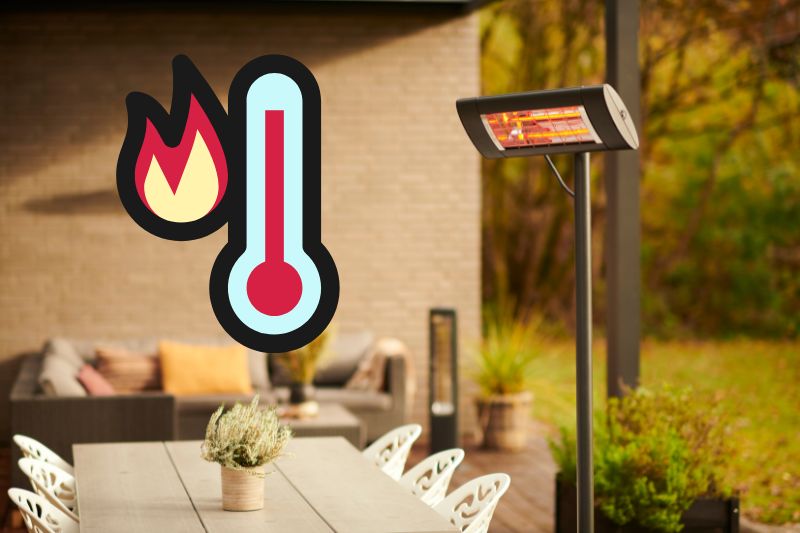Creating a comfortable outdoor space can transform how you enjoy your home, making it possible to entertain or relax outside even when the air gets nippy. Patio heaters are a popular choice for extending the usability of outdoor areas into cooler seasons.
Types Of Patio Heaters

Before discussing their placement, let’s explore what patio heaters are and how they work. Patio heaters come in various types, including propane, electric, and natural gas models. Each type has unique features and operating mechanisms:
- Propane patio heaters are portable and offer high heat output, which makes them popular for residential and commercial spaces.
- Electric patio heaters are convenient and can be used in enclosed areas since they do not produce carbon monoxide.
- Natural gas heaters require a fixed line, which limits mobility but offers efficiency and cost-effectiveness for continuous use.
These heaters typically emit heat either through radiation, which warms objects and people directly, or convection, which heats the air.
Safety Considerations

The primary concern when using a patio heater under a covered patio revolves around safety. The risk factors include fire hazards, carbon monoxide poisoning, and physical injuries. To mitigate these risks, consider the following safety protocols:
Clearance
The distance between the patio heater and any combustible material is critical. Manufacturers usually provide specific clearance requirements in their usage manuals, and adhering to these guidelines is non-negotiable. For example, a common recommendation for propane heaters is maintaining at least three feet of clearance from the sides and six to eight feet from the top of the heater to any ceiling or covering.
Ventilation
Adequate ventilation is essential, particularly for gas heaters that emit carbon monoxide. While electric heaters don’t pose the same risk of carbon monoxide poisoning, all heaters can benefit from some degree of airflow to prevent heat buildup under the patio cover.
Material of the Cover
The material of your patio cover also plays a significant role in determining the safety of using a heater underneath. Non-combustible materials like metal or fiberglass are safer choices compared to wood or fabric.
Proper installation enhances safety and efficiency. Here are key considerations:
Positioning
Position the heater in a way that maximizes heat distribution while adhering to safety clearances. Central placement is often ideal, but in larger areas, multiple strategically placed heaters might be necessary.
Mounting
For electric and gas heaters that can be mounted to walls or ceilings, ensure that the structure can support the heater’s weight. Professional installation might be necessary to guarantee safety and compliance with local building codes.
Protection from Elements
Even if designed for outdoor use, patio heaters benefit from protection against weather conditions. Using weatherproof covers when the heater is not in use can extend its lifespan and maintain its appearance and functionality.
Usage & Maintenance

Effective usage and regular maintenance are key to the longevity and safety of your patio heater. Here’s what to keep in mind:
Regular Inspections
Check connections, gas lines, and electrical cords for signs of wear and tear. Ensure all components are functioning correctly and replace any damaged parts immediately.
Cleaning
Keep the heater clean from dust and debris, which can accumulate and potentially ignite or block ventilation pathways.
Professional Checks
Have your heater serviced by a professional annually, especially if it operates on gas. This ensures all safety measures are up-to-date and effective.
Alternatives to Traditional Patio Heaters
If using a traditional patio heater under your covered patio seems too risky or if space does not allow for safe operation, consider alternative heating solutions:
Radiant Floor Heating
Installing radiant heating beneath the patio surface can provide warmth without the risks associated with freestanding or overhead heaters.
Infrared Heaters
Wall-mounted infrared heaters can be a safer alternative because they can be installed away from combustibles and don’t have an open flame.
Fire Pits
If local regulations and living space allow, a built-in or portable fire pit can provide heat as well as a cozy, inviting ambiance. Always ensure proper clearance and use fire screens to catch sparks.
Final Words
Using a patio heater under a covered patio can be safe and enjoyable if done correctly. It is crucial to choose the right type of heater, follow the manufacturer’s guidelines for installation and clearance, and maintain regular checks and balances. With these measures in place, you can extend your outdoor living season while keeping safety as a priority. Enjoy the warmth of your patio heater responsibly, and your outdoor space will be a haven of comfort in the chillier months.
FAQs
Can I use a freestanding patio heater on a wooden deck under a covered patio?
Yes, you can use a freestanding patio heater on a wooden deck, but extreme caution is necessary. Ensure the base of the heater is stable and secure, maintain the recommended clearance from all wooden surfaces, and never leave the heater unattended while in use to prevent any risk of fire.
What should I do if my patio heater gets wet from rain or snow?
If your patio heater gets wet, turn it off immediately and disconnect it from its power source (if electric) or turn off the gas supply (if gas). Allow it to dry completely before attempting to use it again. Check all electrical and gas components for signs of water damage before reuse.
How can I determine the correct size of patio heater for my covered area?
To determine the right size, consider the square footage of the area you want to heat. As a general rule, a patio heater’s output is measured in BTU’s or watts, and you’ll need about 10 watts of heating power for each square foot of floor area. A typical freestanding gas heater, which can provide up to 40,000 BTUs, can effectively heat about 20 square feet (1.86 m²)of space.
Are there any specific local regulations I should be aware of before installing a patio heater under a covered patio?
Yes, local regulations regarding the use of patio heaters can vary significantly. It’s essential to check with your local fire department or building inspector to ensure compliance with any specific ordinances or codes related to the installation and operation of outdoor heating appliances.
Can I convert my propane patio heater to natural gas, or vice versa?
Converting a patio heater between propane and natural gas generally isn’t advisable unless the manufacturer provides a conversion kit and detailed instructions. Each fuel type requires specific burner configurations and gas pressures, and improper conversion can lead to safety hazards and operational issues.
How do I store my patio heater during the off-season?
To store your patio heater, first ensure it’s clean and completely dry. Disconnect the fuel source and store any removable gas tanks separately in a well-ventilated area. Cover the heater with a weather-resistant cover to protect it from dust and debris, and store it in a dry, sheltered place to prevent rust and weather damage.

